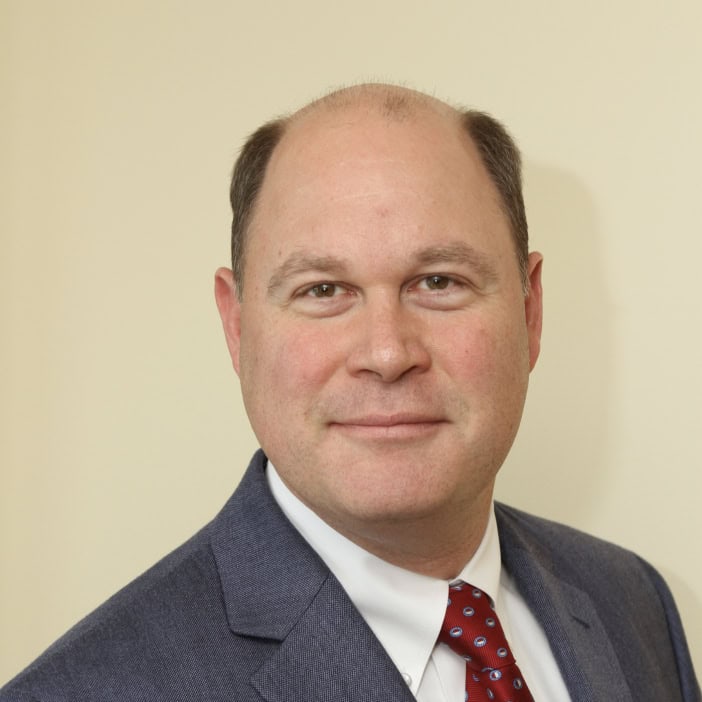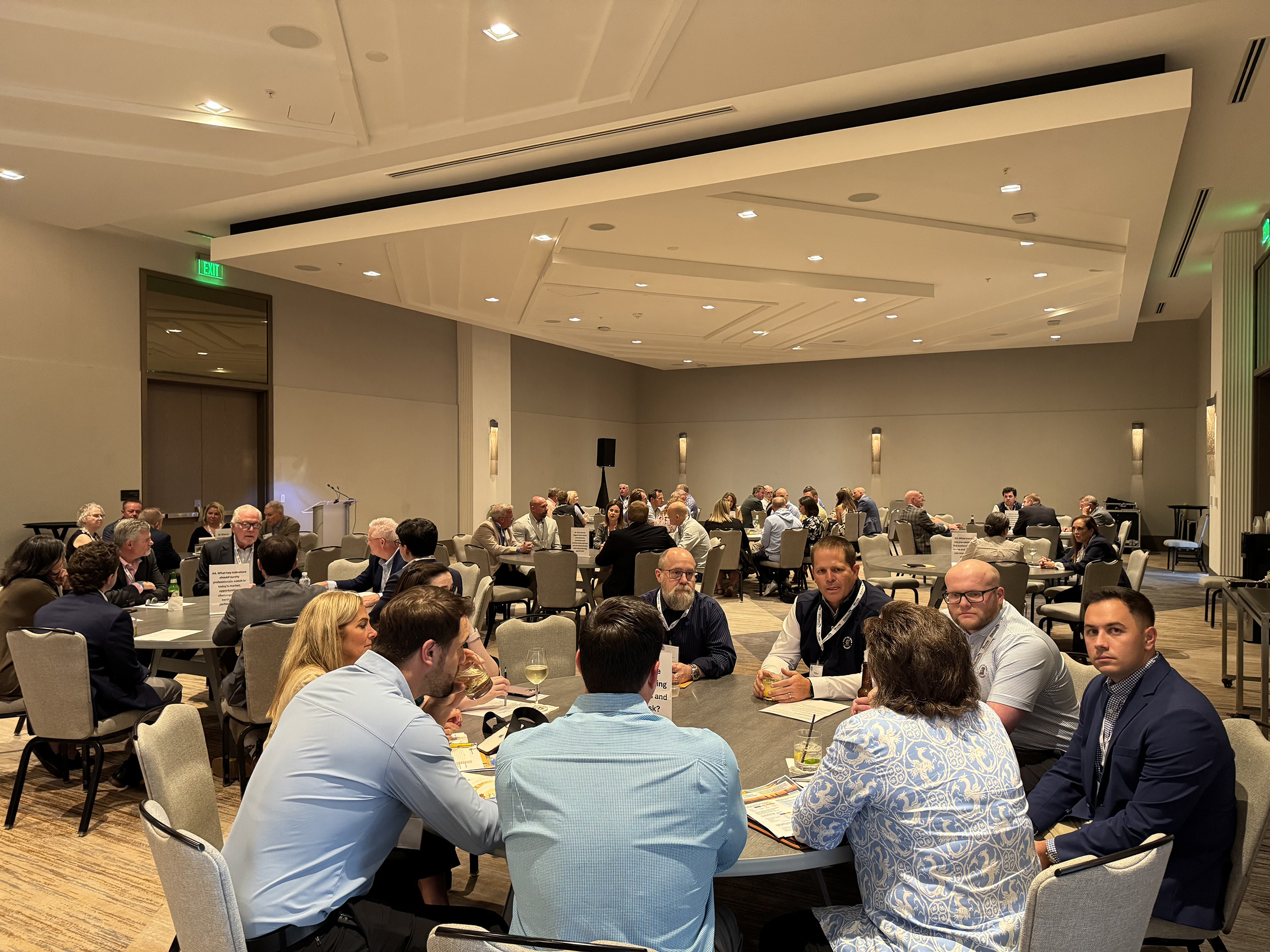August 2003
OFPP Administrator Upholds Differences Between Procurement of Construction Services and Commercial Items
Since last summer, NASBP has been monitoring the interest of the General Services Administration (GSA) in changing federal procurement policy relative to construction services. For background information, see a related article in the December 12, 2002 issue of Pipeline.
On July 3, 2003, Angela Styles, Administrator of the White House Office of Federal Procurement Policy (OFPP) and spokesperson for the Bush Administration, weighed in on this issue. Ms. Styles issued a memorandum to senior executives of Federal contracting agencies indicating that:
Part 12, as currently promulgated, should rarely, if ever, be used for new construction acquisitions of non-routine alteration and repair services. In accordance with long-standing practice, agencies should apply the policies of FAR Part 36 to these acquisitions. Part 36 incorporates provisions and clauses that are generally consistent with customary commercial practices in the construction industry.
Styles went on to say that Part 36 applies well-established commercial principles…designed to result in an equitable distribution of risk between the government and contractors.” Conversely, Part 12 does not contain provisions for handling critical circumstances especially common to new construction and unique, complex alteration and repair projects.
The Styles’ memorandum alleviates the concerns of the Associated General Contractors of America (AGC) and other associations about GSA’s interest in changing the long-standing application of Part 36. NASBP was one of many construction and surety associations that attended a GSA-sponsored roundtable in October 2002, at which GSA described its reasons for wanting to rely on Part 12. NASBP spoke in support of concerns raised by AGC, and also raised concerns about the increased flexibility, responsibility, and leeway the proposal would provide contracting officers.
Finally, Ms. Styles requested that all senior procurement executives distribute the memorandum widely to personnel in each agency who are responsible for construction contracting. She asked the agency executives “to review any agency guidance of Part 12 relative to construction acquisitions and change or rescind guidance, as necessary, to ensure consistency with the memorandum.”
To view Styles’ letter in its entirety, log onto: http://www.nasbp.org/ContructionAsCommercialMemo7-3-03.pdf
What’s Our Role: Professional Advisor or Commission Collector?
During the final day of the William J. Angel Surety School, Level 1, the students are involved in a case study that examines the financial statements of a make believe contractor over a five-year period. As you can imagine, different issues are introduced during the case study to emphasize the many topics and underwriting points that had been discussed during prior classes of the school.
As you can further guess, there is a “train wreck” at the end. The “train wreck” centers around a large underbilling on one project. The contractor is almost wiped out; however, he never goes into bond claim nor does he cause any loss to his surety, subcontractors, suppliers, or the project owner. After the students understand the financial statement underwriting aspect of the exercise, the question is usually posed, “Which of you no longer want to work with this contractor?” It never fails that a series of hands shoot up opening the door for the faculty to get on their soapbox and preach about the relationship aspect of our business.
The lesson taught during this exercise deals with the fact that as this contractor’s professional surety producer, we readily assisted him when things were going well during his first four years, especially when it came to invoicing the premium and collecting our commissions. We most likely made money on his property/casualty/life and health insurance as well. This contractor helped feed our family! Now that he really “needs” the assistance of a professional, we’re ready to move on.
At this juncture we discuss the value we add as producers and the responsibilities we have. Now that the contractor “really” needs us, when the commission dollars are going to be a lot harder to earn, we should not lose sight of all those “easier” commission dollars we made.
Most of us have had or currently have an account that in some manner reflects the problems the Level 1 students are introduced to. I was reminded again just the other day when a contractor customer thanked me for all the hard work I was doing on his behalf, although it’s been almost a year since a final bond has been written!
This customer of mine, possibly like some of yours (hopefully very few), has had a ”train wreck.” A person in my office asked me why I was working so hard on this account when all appeared hopeless. Quite frankly, at that particular moment, I was asking myself the same question. That’s when I reminded myself of what we teach in class, and I replied, “Because we should stand by our customers in their difficult times as readily as we do in their good times. And we’ve had 14 years of good times on this account.”
As an NASBP member, I want my customers to think of me as a surety professional. It’s in this role that we should more than gladly provide the professional, quality assistance and advice for which our customers have already paid us.
Matthew K. “Matt” Cashion, Jr. is Secretary/Treasurer of The Cashion Company, Inc. in Little Rock, AR. He can be reached at Mattc@cashionco.com.
CA Surety Professionals Help Staff NASBP Booth
The annual meeting and exposition of the National Conference of State Legislatures (NCSL) took place on July 23-25 at the Moscone Center in San Francisco, CA. Seven surety professionals from NASBP member agencies around the bay area volunteered their time, knowledge, and expertise in the surety industry by answering questions about the industry and promoting NASBP’s efforts to get statutory directed surety prohibitions enacted in all the states. NASBP Government Relations Director, Connie Lynch, and Government Relations Coordinator, Colin Chiles, also were present to answer state-specific questions and to express appreciation to legislators from the four states that passed legislation prohibiting directed suretyship this year.
Many thanks to the following volunteers:
Maureen O’Connell – – Gallagher Construction Services
John Daley – – California Insurance Center
Carol Smith – – California Insurance Center
Rich Pratt – – Noack and Dean/InterWest Insurance
Laura Plaisant – – Gallagher Construction Services
Lin Byas-Barnett – – California Insurance Center
Tanya Chinchilla — California Insurance Center
Visitors to NASBP’s booth received NASBP’s brochure on the value-added services of professional surety bond producers and a chance to win one of three San Francisco board games that are based on the popular game Monopoly, but include San Francisco landmarks. The three winners of the board games were Delaware House legislative staffer Lori Rigby; Georgia House Speaker Terry Coleman; and North Dakota Representative David Drovdal. Follow-up letters, describing NASBP’s issues and concerns for next year’s 2004 state legislative sessions, will be sent to all attendees who stopped by the booth.
NCSL is a national, bipartisan organization dedicated to serving lawmakers and staffs of the nation’s 50 states, commonwealths, and territories. It is a source for research, publications, consulting assistance, meetings and seminars, and representation before Congress, federal agencies, and the Administration.
Next year’s NCSL meeting will take place in Salt Lake City, Utah on July 18-25.
Tanya Chinchilla (Middle) and Lin Byas-Barnett (Right) of California Insurance Center with Mississippi State Senator Hillman Terome Frazier (Left)
Laura Plaisant (Left) of Gallagher Construction Services and NASBP Director, Government Relations, Connie Lynch (Right)
Rich Pratt (Left) of Noack and Dean/InterWest Insurance speaks with conference attendee Jason Benton (Right)
John Daley (Left) and Carol Smith (Middle) of California Insurance Center with NASBP Government Relations Coordinator Colin Chiles (Right)
Reminder: Sign Up for the Regional Meeting of Regions 1, 2, and 3
The September Regions 1, 2 and 3 Annual Meeting Registration and Schedule Now Available Online! The Hyatt Regency Lake Tahoe Resort & Casino in Incline Village, Nevada will host the NASBP Regions 1, 2, 3 Annual Meeting September 11-14, 2003. Information-packed general sessions and entertaining social functions make this meeting a ‘must attend’! Don’t delay. REGISTER NOW at http://www.nasbp.org/R123_2003/tahoemeetingintro.htm
States Increase Taxes and Fees, Cut Spending to Balance Budgets
With many state legislatures adjourning for the year, state and local interest groups are beginning to examine how legislatures have dealt with the ongoing fiscal crisis. Reports indicate that states have been cutting spending across the board and increasing revenue with either higher fees or tax increases.
For the first time since 1983, state government spending is expected to shrink from one fiscal year to the next, with 19 states predicting negative growth in state government for the fiscal year that begins July 1, according to a report released by the National Association of State Budget Officers (NASBO) and the National Governors Association (NGA).
Of the states that have completed their budgets, the National Conference of State Legislatures (NCSL) and the American Legislative Exchange Council (ALEC) report:
- 20 states have raised taxes by $13.1 billion.
- 31 states cut spending, even though overall spending is increasing. While states cut over $8 billion from fiscal 2003 budgets this year, total spending will increase by over $11 billion.
- 29 states tapped a variety of state funds. Total state borrowing in fiscal 2002, including general obligation, special revenue and tobacco settlement bonding, was $30.2 billion. That increased to nearly $68 billion in fiscal 2003.
- 23 states reduced their state workforces or took other actions affecting state employees.
- 13 states withdrew from rainy-day funds.
- 11 delayed capital projects or shifted them from pay-as-you-go projects to debt.
Besides NASBO, NGA, NCSL and ALEC, the National League of Cities (NLC) and the National Association of Counties (NACo) have provided reports. For more information, link to:
- NASBO & NGA report: “The Fiscal Survey of the States” http://www.nasbo.org/Publications/fiscalsurvey/fs-spring2003.pdf
- NCSL press release: “States Balance Budgets Without Broad Tax Hikes, New NCSL Report Shows”: http://www.ncsl.org/programs/press/2003/pr030723.htm
- ALEC press release: “State Taxes Surge 48 Percent Mid-Year”: http://www.alec.org
- NGA press release: “Tough Economic Times Remain for States”: http://www.nga.org/nga/newsRoom/1,1169,C_PRESS_RELEASE^D_5631,00.html
- NLC press release: “Cities Raise Fees and Taxes, Cut Projects and Staff to Deal with Increasing Fiscal Squeeze” : http://www.nlc.org/nlc_org/site/newsroom/nations_cities_weekly/display.cfm?id=9E4EC88F-1639-453C-951CE56E55776B13
- NACo press release: “NACo executive director labels as ‘travesty,’ elimination of fiscal relief for local governments in tax bill”: http://www.naco.org/Template.cfm?Section=Media_Center&template=/ContentManagement/ContentDisplay.cfm&ContentID=8198
From NASBP’s General Counsel:
Bank Assignments: A Sure Sign of Trouble to Come
My firm recently received faxes from three different general contractor clients the same day, all of whom had received the same letter in the mail from a local bank. The bank was informing them that from now on all funds owed to a particular subcontractor should be sent to the bank instead. While I am sure that many other contractors got this same letter, I don’t know if they took the right precautions to protect themselves and their surety companies. At least we had the opportunity to educate these three.
What none of our clients understood was that (1) the bank had every right to demand that the funds go to it, despite a “no assignment of funds” clause in the subcontracts; (2) the bank had no obligation to use any of these funds to pay suppliers’ or sub-subcontractors’ bills; and (3) the contractors had no obligation (for the most part) to pay the bank until they were satisfied that any potential claims for which the contractors could be liable, i.e., potential lien or bond claims, had first been resolved.
A bank can demand that you pay it instead of the company. This is the law virtually everywhere, because without that right, no bank would lend money to anyone because the borrower can’t be counted on to aggressively go after receivables for the bank’s benefit later. Any agreement in the subcontract to the contrary is void as to the bank [UCC § 9-406(d)]. If the owner/contractor pays contractors/subs/vendors after receiving a notice to pay the bank, the owner’/contractor could end up paying twice.
The bank can use the money to repay itself first. Obviously, if there is money left over, the bank can’t pocket it as profit but probably can use it to offset its accrued finance charges, legal fees, and “administrative expenses.” Frequently there will be no money left over at the end. The bank has no obligation to the customer’s creditors nor would the owner/general contractor if it weren’t for mechanic’s liens and bond claims [UCC § 9-607(a)].
The owner/contractor can generally protect itself. A well-drafted contract will reserve to the owner /general contractor the right to demand proof that the contractor/sub/vender has paid all its bills; absent such proof, the owner/general contractor may pay by joint check or directly, and has the right to offset any back charges or liquidated damages that the sub/vendor owes. In some states, the owner/contractor has this right even if it isn’t explicitly stated in the contract. Only after these obligations are fulfilled will there be any money left over that would otherwise have gone to the bank’s customer, and that is all that the bank is entitled to.
It is still important to monitor who you do business with. A prudent contractor knows that there is no foolproof way of avoiding problems associated with bank assignments, and that the best “insurance” is to be very careful about whom to do business with. My firm is still in the middle of trying to help a client who received a court garnishment order when one of its subs, now out of business, lost a lawsuit to another contractor, and the contractor tracked down every other company that owed that sub money. Technically, our client has the right to offset the cost of fixing the sub’s work and paying its bills, but the client will end up paying legal fees to fight this in court. The client had never used this out-of-town sub before, but its price was so much lower than the other local subs . . . well, you get the picture.
Hard economic times require more diligence and more careful documentation by contractors so they are protected from payment bond claim exposure. The educated, experienced surety bond professional is in an excellent position to help guide his or her customer through these rocky shoals and avoid getting caught up a whole reef of trouble.
NASBP’s General Counsel is Susan McGreevy of Husch & Eppenberger LC, Kansas City, MO.
Changes to the T-List
The Finance and Management Services Branch, U.S. Department of the Treasury, has announced the following changes in its Listing of Approved Surety Companies:
Terminations (Effective 6/30/2003)
Scor Reinsurance Company
Universal Surety Of America
Commercial Casualty Insurance Company Of North Carolina
Diamond State Insurance Company
United National Insurance Company
Changes (Effective 6/25/2003)
Atlas Assurance Company of America changed its name to Peerless Indemnity Insurance Company
Please Note: The 2003 Revision of the Department of the Treasury’s Listing of Approved Sureties, Circular 570 is now available.
Go to http://fms.treas.gov/c570/c570.html. Any questions and comments should be forwarded to webmaster@fms.treas.gov.
New & Improved Level III Surety School To Take Place in Nov.
Register now at http://www.nasbp.org/school.cfm for the curriculum-enhanced William J. Angell Surety School Level III that will take place in Houston, TX, on November 13-15, 2003. This advanced level professional development education program is designed for Level II graduates or those with a minimum 5-10 years of industry-related work.
Briefly Noted
PASSING
With sadness we report the death of Fitzgerald S. Hudson, NASBP President in 1968, who passed away in June.
PRODUCER NEWS
NASBP member firm, Early, Cassidy & Schilling, Inc. of Rockville, MD. is pleased to announce that Paul Hayden has joined its staff as a producer/specialist in its construction division. Paul, a long time instructor at the NASBP Surety School, brings to the organization a strong and varied background in the surety industry.
POSITIONS
Fidelity and Bonding has an opening for a Contract Surety Underwriter in its Washington DC office. Requirements: three or more years experience in contract surety underwriting with excellent risk selection and marketing skills; strong computer knowledge and effective communication skills. Send resume and salary requirements to Beth Wagner at Beth.Wagner@thehartford.com or apply online at www.thehartford.com. While all responses are appreciated only those candidates who best meet the desired qualifications will be contacted to discuss the opportunity. EOE office. Requirements: three or more years experience in contract surety underwriting with excellent risk selection and marketing skills; strong computer knowledge and effective communication skills. Send resume and salary requirements to Beth Wagner at Beth.Wagner@thehartford.com or apply online at www.thehartford.com. While all responses are appreciated only those candidates who best meet the desired qualifications will be contacted to discuss the opportunity. EOE
The Hartford Fidelity and Bonding is seeking a Contract Surety Territorial Manager for its Home Office in Hartford, Connecticut. Requirements: At least 5 years contract surety underwriting experience. Responsibilities: Work closely with Regional Office underwriters, leadership/management experience is a plus. For consideration, send resume and salary requirements to Jodi Wallach at jodi.wallach@thehartford.com.
NAS Surety Group/Washington International, specializing in serving small-medium sized contractors, is currently seeking a Territorial Surety Representative for its Manchester, NH branch office, which services the NE United States. Requirements: Strong contract underwriting and marketing skills; Bachelor’s degree in business-related field; strong PC skills with a proficiency in Excel and Word; excellent interpersonal and communication skills; and have the ability to travel. Relocation is accepted. Qualified candidates should forward their resumes, including salary requirements, by mail to Human Resources, NAS Surety Group; 1200 Arlington Heights Road, Ste. 400; Itasca, IL 60143; by fax to 630-227-4705 or by email to Judith_gazaway@nassurety.com. See the company’s website, www.nassurety.com, for more information.
Old Republic Surety Company has two opportunities for strong, self-starting underwriting/ marketing persons for assigned territories. The Irving, TX office needs a seasoned Contract Underwriter familiar with the Texas market. A Field Underwriter opportunity exists for someone to work from their home to market the states of Indiana and Kentucky. Requirements: Both positions require good Contract & Misc. surety bond underwriting experience (3-5 years); travel is required.
Call Janell Manson, H.R. Director at 262/797-2643 for more information; send resume by email to manson@orsurety.com or by fax to 262/797-8874. Visit www.orsurety.com for more company information. EOE
SIO Update: SIO Presentations Now Just a Click Away
Instantly access SIO’s growing collection of contract surety PowerPoint® presentations at www.sio.org/ppt/zipfiles.html. These presentations are ideal when speaking to private owners, developers, public agencies, attorneys, CPAs, bankers, educators and students, design professionals, and contractors and subcontractors. Coupled with SIO’s array of audience-specific handouts, these presentations will help make your next event a success.
SIO has taken the guesswork out of which presentation to select by including the cover slide, a brief description, and the primary audience best matched for the particular presentation. Users will need WinZip software to decompress the files (the page contains a link to download this free software program). For additional information for surety professionals, such as promotional tools and presentation ideas, speaking tips, or training new surety professionals, go to www.sio.org and click on the Surety Professionals button.
SIO can also provide color overheads or CD versions of any of the presentations – just e-mail sio@sio.org or call 202/686-7463 with your request or order the Surety Professional CD, which contains a manual version with speaker’s notes for giving a presentation and a narrated version for viewing at the computer.
GSA’s Robert Hixon Named CMAA’s “Person of the Year”
The Construction Management Association of America (CMAA) recently announced that Robert C. Hixon, Jr., PE, CCM, has been named its “Person of the Year” for 2003. This award, which recognizes an individual who has contributed significantly during his or her career to the advancement of the construction industry and the professional practice of construction management, will be presented at CMAA’s National Conference that will take place September 7-9 at the Grand Hyatt hotel in Washington, DC.
Mr. Hixon is director of the Center for Construction and Projection Management, Office of the Chief Architect, Public Buildings Service, General Services Administration (GSA). In this position he has been responsible for GSA’s Construction Excellence Program, bringing the highest possible standards of construction management to a portfolio of more than 160 projects worth more than $5 billion.
“Bob Hixon has been a consistent and successful advocate for professional construction management at GSA, both enhancing the effectiveness of GSA’s 255 in-house project managers and expanding the agency’s recognition of the CCM professional certification among contractor personnel,” notes Bruce D’Agostino, executive director of CMAA.
Mr. Hixon also developed and implemented the construction peer review program at GSA, which brings architects, construction managers and contractors together for ongoing dialog and review of every GSA project. In addition to improving outcomes of individual projects, the program has been a valuable training tool for GSA project managers.
Among the most visible projects shepherded to completion by Mr. Hixon during his career is the Ronald Reagan Building and International Trade Center, a landmark 3.1 million square foot structure in Washington, DC.
CMAA is an industry association that promotes the understanding, technical advancement and growth of professional construction management services applied to all forms of construction project delivery. Its mission is to promote professionalism and excellence in the management of the construction process. CMAA’s national headquarters are based in McLean, Virginia.
Select NASBP Affiliates and Exhibitors Receive 2003 ACORD Awards
The “ACORD Awards” were presented to 43 companies, which include NASBP Affiliates and NASBP Annual Meeting Exhibitors. In announcing the award winners, Susan Ousey, ACORD’s senior vice president, said implementation of new standards requires hard work and dedication, “but it is only the beginning. It is those companies that take these standards and implement them with their business partners that bring to life e-business with all of its advantages in the marketplace.”
Read the full article and view photos at http://www.acordconference.com/2003/news.aspx
MD Changes Order on Mandating Mold Coverage
On June 27, the Maryland Insurance Administration (MIA) rescinded a previous order requiring insurers to offer mold coverage. According to a report in the July 3, 2003 Insurance Newscast, “ The new order now allows insurers to exclude such coverage.”
The previous order stemmed from an informational session on the topic of mold, which the MIA hosted late last year. The result of that session was an order issued on March 18, 2003, in which MIA outlined the limited circumstances it would approve mold limitations for property-casualty insurance.
The Alliance of American Insurers hailed the decision. Neil Malady, manager of the Alliance’s Mid-Atlantic Region was quoted as saying, “The Alliance welcomes the Insurance Administration’s new, more flexible stance on mold coverage…Our association always opposes such mandates because they require coverage that was never contemplated in the initial policy contract. Mandating its coverage only creates financial instability for insurers and availability and affordability problems for consumers. By allowing insurers to offer a variety of coverages at a range of prices, consumers will be allowed to choose the coverage they need at a price they can afford.”
According to the Alliance’s director of claims, Kirk Hansen, mandated mold coverage has caused higher claims costs that have raised insurance premiums. He was quoted as saying, “Texas’ experience serves as an excellent example as to why no state should mandate coverage for mold. Because Texas in the past mandated use of a homeowners policy that did not require water discharge to be sudden and accidental, as required by standard policies in most other states, it had the dubious honor of having the highest homeowners premiums in the nation.” According to Hansen, insurance departments in 39 states and the District of Columbia have approved homeowners exclusions for mold.
Likewise, the American Insurance Association (AIA) praised Insurance Commissioner Al Redmer for rescinding the previous order. AIA assistant vice president for the mid-Atlantic region was quoted as saying, ” Commissioner Redmer’s decision to rescind the mold order allows insurers the choice of whether or not they will decide to offer mold coverage…The surge in mold claims over the last few years has required insurers and regulators alike to work together to establish rational standards for mold coverage that provide consumers and businesses sufficient coverage options while also preserving a viable insurance market.”
The MIA’s Order of Rescission No. 2003-06-020, dated June 27, 2003, is available at: http://www.mdinsurance.state.md.us/documents/BulletinP&C03-12.pdf.
This article was excerpted from ones appearing in Insurance Newscast at http://www.worksite.net/070303l.htm#2.
Pipeline is produced monthly by the National Association of Surety Bond Producers, 1828 L Street, NW, Suite 720, Washington, DC 20015-2014, 202/686-3700, Fax: 202/686-3656, www.nasbp.org, Internet e-mail address: info@nasbp.org
Disclaimer: This information is provided for educational and informational purposes only and is not intended to serve as legal advice. Readers are cautioned to consult their legal counsel on any specific matters.
If you no longer wish to receive Pipeline, you may unsubscribe by responding to this email with “REMOVE” as the subject, or you can visit NASBP’s subscription management page here.
Get Important Surety Industry News & Info
Keep up with the latest industry news and NASBP programs, events, and activities by subscribing to NASBP SmartBrief.




